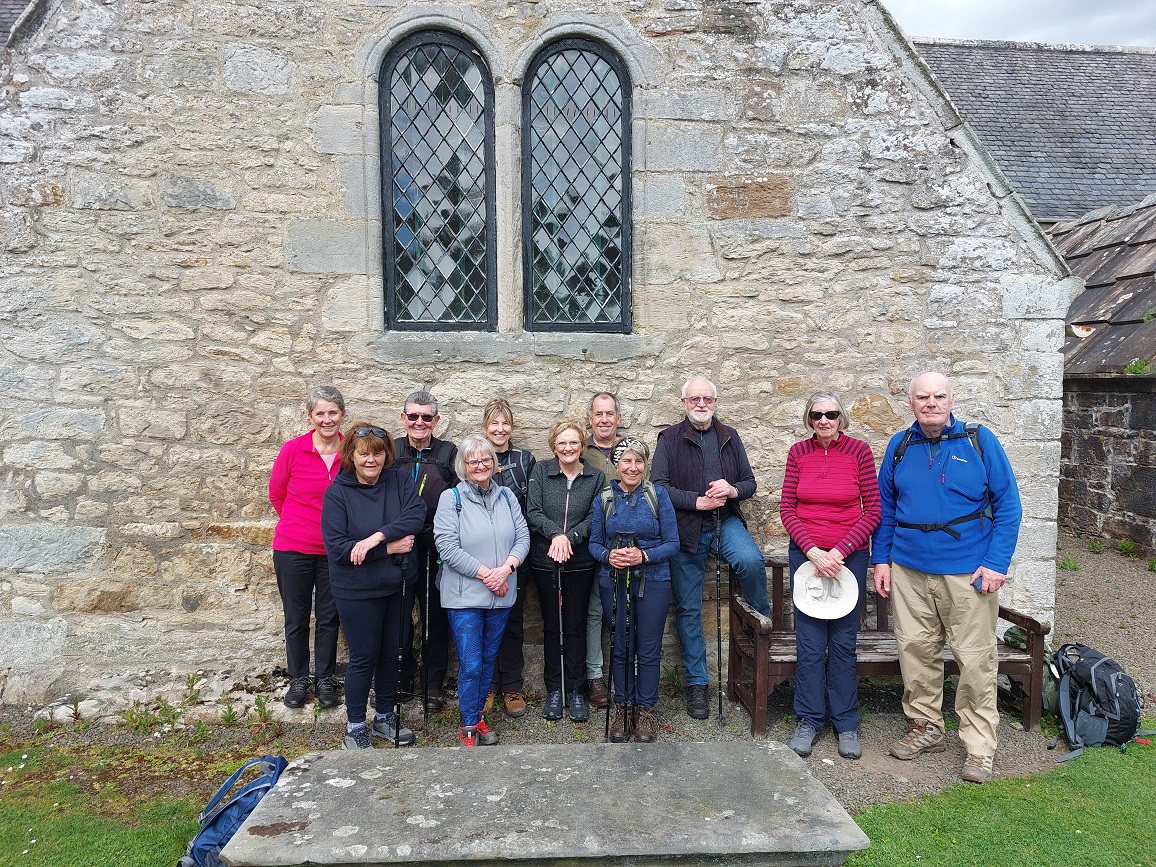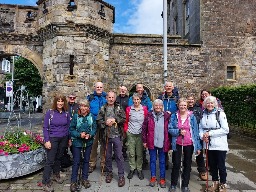
The Ladywell Way is an unofficial, unmarked but easy-to-follow path, which takes the pilgrim from Motherwell through North Lanarkshire and West Lothian to the Firth of Forth. There are a number of highlights along the way, as the route takes us past the National Marian Shrine at Carfin and along the banks of the River Avon to Linlithgow, the birthplace of Mary Queen of Scots. Shortly after Linlithgow, we come to the quiet hamlet of Abercorn, with its church and graveyard, and nearby is the magnificent Hopetoun House on the banks of the Forth.
Abercorn has an important place in Scottish church history. Abercorn was the site of an important monastery, was the seat of Trumwine, ‘Bishop the Picts’ in the seventh century, and is mentioned by the St Bede in his chronicles. The name lives on in the Church as a titular see; Bishop John Mone was Titular Bishop of Abercorn when he was Auxiliary Bishop of Glasgow from 1984-1988.

The Fife Pilgrim Way was officially opened in 2019, and is clearly waymarked and easily followed from the Firth of Forth to St Andrews. St Andrews was a popular pilgrim destination before the Reformation in the 16th century, and some remnants of this ancient pilgrimage can still be seen along the way.
The logo for the FPW is based on a 600-year-old pilgrim badge which was uncovered in St Andrews in 1998. These badges would have been sown onto a pilgrim’s clothing to show that he had completed the pilgrimage. The logo has an image of St Andrew on the diagonal cross, with a crown denoting Fife’s royal associations, with a distinctive cross which can be found on the stonework of Markinch Parish Church. This logo can be seen on the signposting and literature of the FPW.
The FPW traverses some stunning Fife countryside, and passes through the important town of Dunfermline., Dunfermline was the seat of Scottish monarchs from the 11th century, and is today dominated by the ruins of the magnificent Romanesque abbey. When Queen Margaret, later Saint Margaret, died in 1093, her remains were interred in the abbey, and pilgrims came to venerate her tomb, with many miracles of healing reported at the time.
St Margaret is a constant presence on the pilgrimage through Fife. Margaret was the Hungarian-born wife of King Malcolm III, and was mother to 3 Scottish kings. She was known for her piety and charitable works, and it is said that she would not dine until she was happy that the poor had all been fed. She was a patron of the pilgrimage to St Andrews, and initiated the ferry crossing across the Forth for pilgrims, and this crossing still bears her name – North and South Queensferry. Margaret also encouraged many monastic orders to come to Scotland. There are a number of churches along the route which bear the name of this wonderful saint, who was canonised by Pope Innocent IV in 1250.
There are many other reminders of the pilgrim footsteps that have preceded us on the road to St Andrews, from holy wells to pilgrim hostels, and as we make our way to our destination, we remember and pray for those gone before us, marked with the sign of faith. We also pray for ourselves as we make our way on our earthly pilgrimage to our final destination, as we walk with God and towards God.
The last word must go to Pope Francis, who has asked us to travel not as tourists, but as pilgrims, and says, “We are called to live out our lives and our pilgrim’s journey in the company of others. We are not on this road alone. There are definite advantages to traveling with others. Can we see God more clearly from the eyes of another? Can we learn from their experiences? Can we stretch ourselves to treat them as we would Christ Himself?”